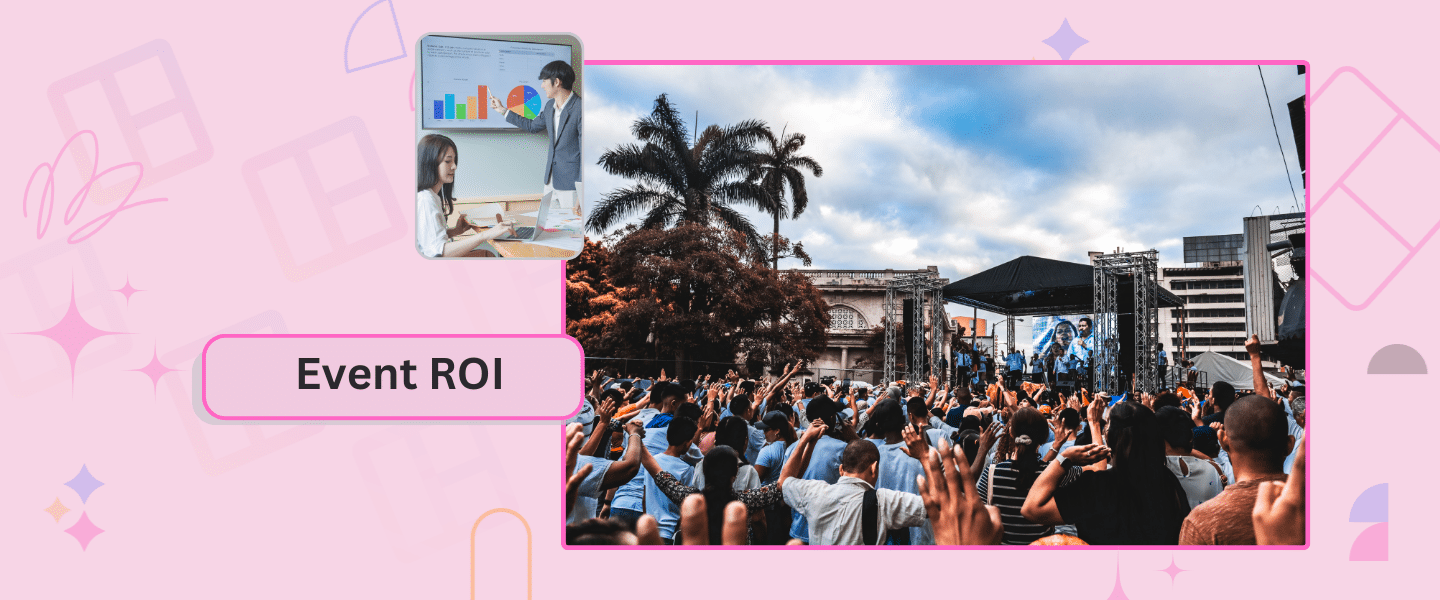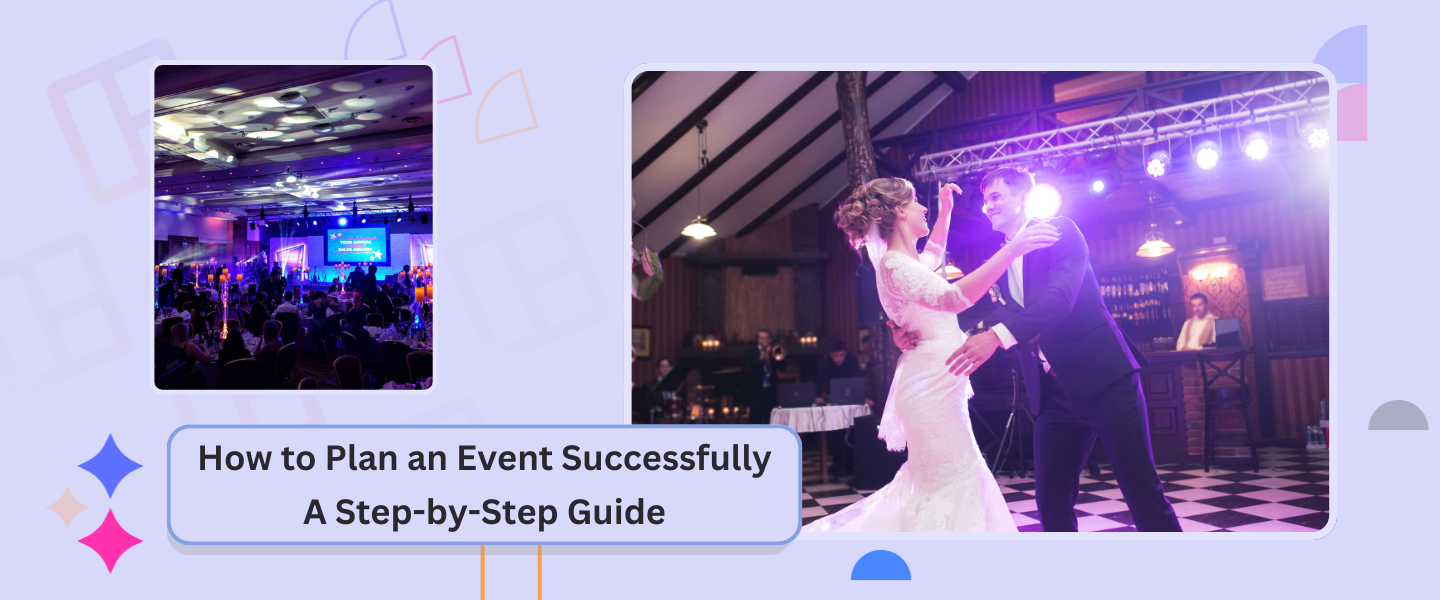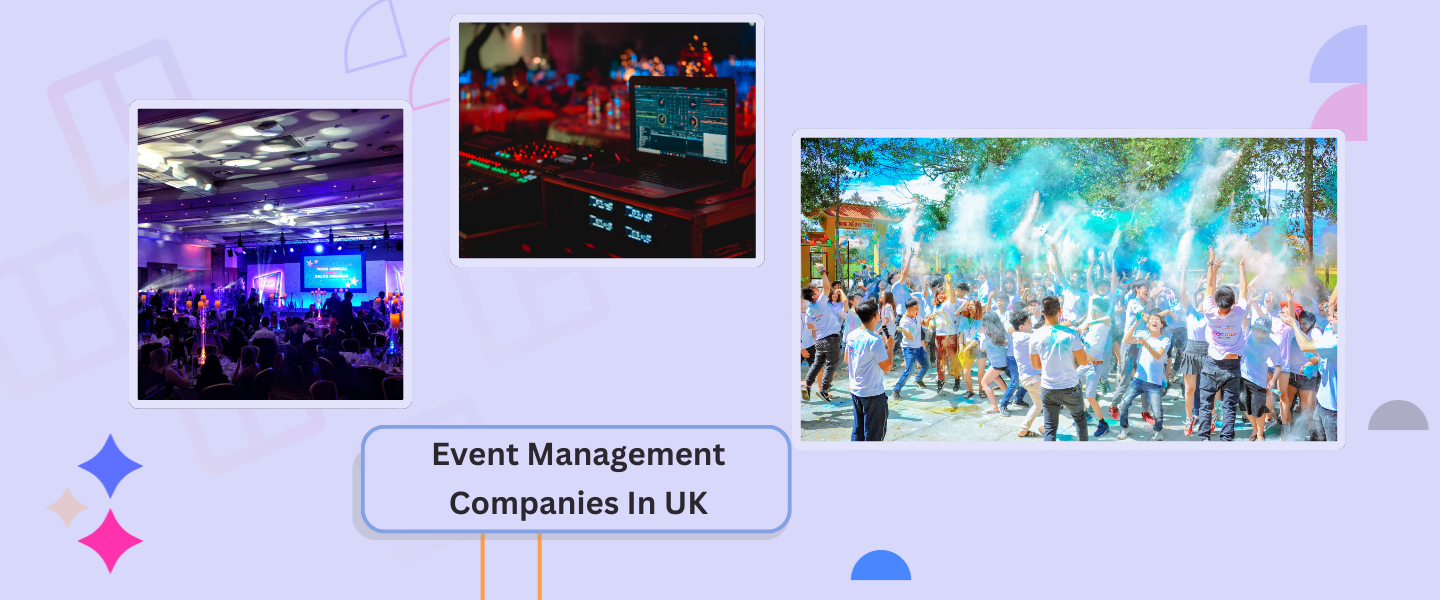Event ROI: Complete Guide to Watch In 2025
Author: jennet
9 minute read
Events are a significant investment, but how do you know that the money and resources you spend are delivering the expected returns? Every business event has a particular mission, such as building new connections or enhancing brand awareness, but do you face difficulty in measuring them aptly? This is where event ROI steps in. It’s about analyzing the event metrics and evaluating the data to maximize your event impact and returns. So, in this article, we will dive deeply into the event ROI: What is it, its benefits, and applications that can help you in measuring accurate ROI metrics. By understanding them deeply, you can take your next event to a higher level, which can help you deliver tangible ROI returns.
Understanding ROI concerning Events
ROI, or return on investment, is widely used to assess profitability. It is expressed as a percentage and calculated by dividing the net profit (or loss) from an investment by its initial cost.
Event ROI refers to the benefits gained from hosting a specific event compared to the expenses incurred. This method evaluates the success and profitability of an event by comparing the returns it generates against the initial investment. When discussing event ROI metrics, we focus on return on investment, specifically from event marketing. Several factors contribute to determining this ROI, including revenue generated, attendee satisfaction, leads acquired, and partnerships established.
How To Measure Event ROI?
Learning how to measure event ROI starts by understanding the formula for calculating it. There are various models for measuring the ROI of Events, but let’s focus on the basics. To calculate it, subtract the total cost of your event from the total revenue generated from sales. Then, divide that result by the total cost. To express this as a percentage, simply multiply by 100.
Total Sales Revenue – Total Cost of the Event/ Total Cost of Event x 100 = Event ROI
As said earlier, there are other models for measuring event ROI. The right approach depends on your event goal, resources, and budget. Let’s look at some other models as well:
Incremental Revenue Model
(Event Revenue – Event Expenses) / Event Expenses
- Event Revenue—Event revenue is the money an event generates from ticket sales, deposits, rent, sponsorship payments, etc.
- Event Expenses – Event expenses are all the costs associated with planning and executing an event. Examples include venue costs, food and beverage, security costs, etc.
Incremental Margin Model
(Gross Margin – Event Expenses) / Event Expenses
- Gross Margin – Gross margin is the percentage of a company’s revenue retained after subtracting direct expenses such as labor and materials.
- Event Expenses – Event expenses are all the costs associated with planning and executing an event. Examples include venue costs, food and beverage, security costs, etc.
Why do We Need to Track Event ROI?
To enhance the quality and effectiveness of your events, tracking event ROI metrics is essential. Here are some reasons why it’s important to monitor your event ROI:
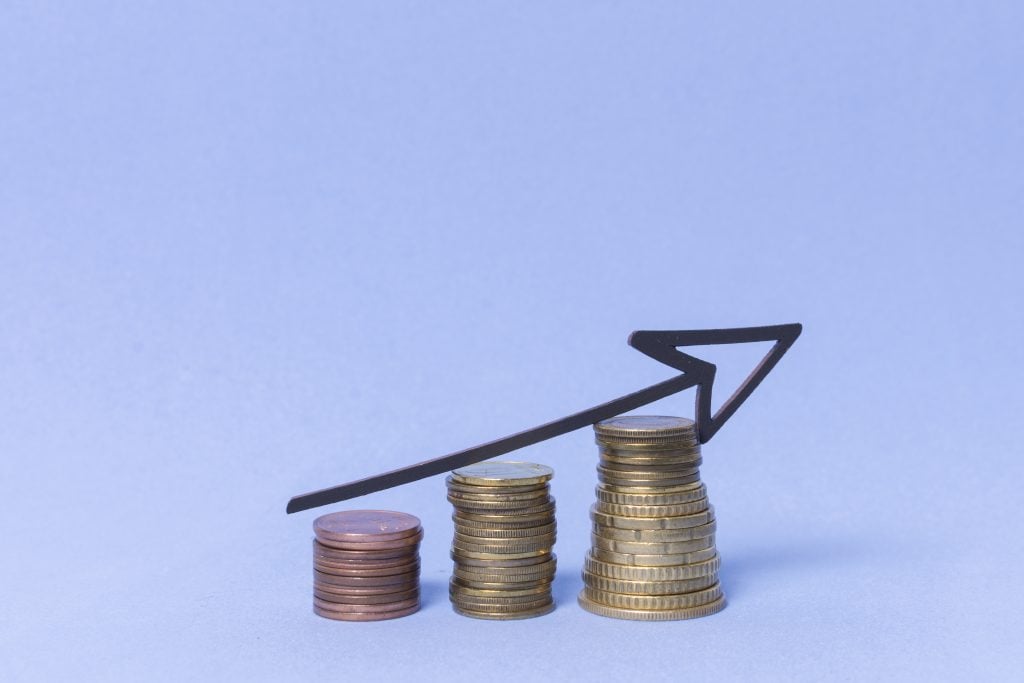
Important for Management
Tracking event ROI metrics provides various benefits to the management team, like making data-driven decisions and resource optimization. Various tools, like Social Walls, are available in the market to track metrics such as attendance rate, lead generation, sentiment analysis, etc. These metrics help provide relevant data to the management team to measure event success.
Accountability
By calculating and tracking event ROI, brands can understand the impact of their event and optimize it. They can also learn which departments work better and which ones need improvement and make informed decisions about future events. Analyzing event ROI will also help the brand allocate resources accordingly.
Enhanced Marketing Efforts
Tracking event ROI helps improve marketing strategies by providing insights into what aligns with the audience and what does not. Evaluating ROI creates an opportunity to iterate and improve for better ROI on future events. Measuring metrics such as attendee satisfaction, engagement rate, or sentiment analysis can significantly improve brand exposure and awareness. It makes you satisfied that your marketing efforts are on the right track.
Impact on Sales
Evaluating event ROI helps brands understand how their event has affected sales. By evaluating how participants have turned into customers and led to sales, brands can see if their events are worth the investment. For example, if people have attended the product launch event and bought from your event, you have successfully driven sales due to the event.
Key Factors in Better Event ROI
Organizing a successful event with maximum ROI involves careful planning and execution. To ensure your event achieves the highest possible ROI, you must implement thoughtful strategies to enhance its impact. Here are some factors to consider:
Define Clear Objectives
The foundation of maximizing ROI begins with establishing clear and measurable objectives. The objectives may vary depending on the type of event goals you are trying to achieve. For example, a trade event might aim to maximize leads, whereas a product launch wants maximum product sales. Defining clear objectives can enhance your event ROI to meet specific targets.
Set Key Performance Indicators (KPIs)
After establishing your business goals and objectives, the next step is to set the KPIs that adhere to them. KPIs provide benchmarks that help track your event progress. Some examples include event tickets/ registrations to monitor the number of attendees, sponsorships or upselling opportunities at the event, etc.
Optimise Event Budget
Optimizing the event budget is important for maximizing the ROI. When working with a budget for an event, ensure that you include all costs and associated expenses. This will help you give the full picture of the event’s cost. Also, to stay within the budget and maximize the ROI, you must be mindful of some costs. Try negotiating with the vendors, choosing a budget-friendly venue, and seeking good sponsorship.
Utilize Data from the Past Events
Using data from past events can help you achieve better event ROI by enabling you to make informed decisions based on previous insights. Measure metrics like attendance, engagement, and revenue rates to identify what worked better in the past. For example, understanding what type of activities attracted higher engagement rates in the past can help you replicate the same activity in different contexts in future events.
Enhance Engagement and Interaction
Engagement is among the most important factors driving event success and return on investment (ROI). Utilizing user-generated content in your social media and email campaigns can enhance engagement and interaction. Tools like Social Walls can help you take your event engagement to the next level. They have various interactive features and advanced analytics to help you track your event and optimize it.
How Can Social Walls Affect Your Event ROI in a Better Way
From giving you maximum engagement to robust analytics, integrating Social Walls into your event to maximize ROI will give you positive results. Before we begin, let’s first understand what Social Walls is.
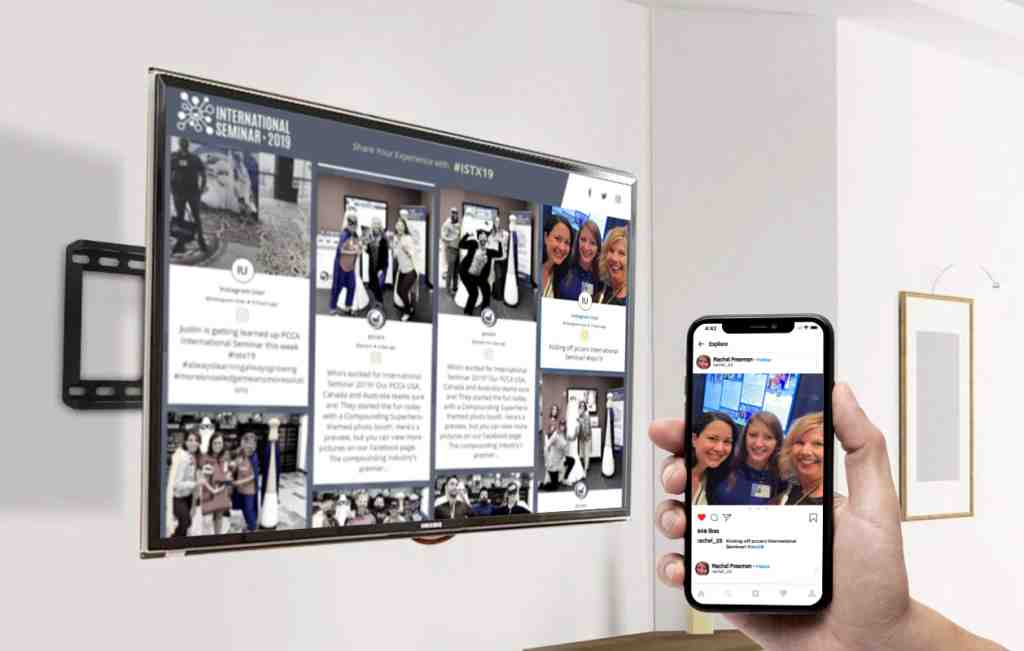
Social Walls by Tagbox is a platform that provides solutions for creating and displaying live social media walls on digital displays in events, offices, stores, virtual events, digital signage, websites, and other offline channels to attract and engage audiences.
Here’s how Social Walls can help you in elevating your event ROI:
Offers Increased Engagement
By creating interactive displays and showcasing live social media feeds to your attendees, you can easily enhance your event engagement and maximize your in-person or Virtual event ROI. Ask your attendees to share their content using your brand hashtag and display it on the digital screens. Doing this can also significantly boost the volume of your brand’s user-generated content, which is great for live events.
Gamifies your Event
An event social wall with gamification elements can help increase your event ROI. Social Walls include a variety of Studio features such as live polls, leaderboards, and quizzes that enhance the overall experience for attendees at events. By transforming passive participants into active ones, gamification makes your event fun.
Read Also:- 12+ Best Event Gamification Ideas With Benefits & Examples In 2025
Wider Audience Reach
When your event reaches a large number of people, it will automatically give you a positive ROI. When attendees are aware of your brand’s products and services, they will likely try to convert, which can help a brand improve its ROI. Social Walls offers advanced analytics tools to measure reach and engagement metrics, allowing you to optimize your efforts and maximize your ROI.
Offers Room for Personalization
Social Wall customization options like themes, CTA buttons or backgrounds, etc., significantly help maximize the ROI for your event by elevating attendees’ engagement and satisfaction. Creating a memorable experience for your attendees not only magnifies engagement but also increases interaction with sponsors and others, which can result in increased revenue opportunities.
Cost-Effective Marketing
One key advantage of incorporating Social Walls into your event is that they provide a cost-effective solution with a high return on investment. You can reduce the need for expensive promotional material and advertising by effectively utilizing user-generated content. This ultimately enhances the event ROI without making significant financial investments.
Read Also:- 20 Engaging Event Marketing Ideas For Small Businesses
Maximize Sponsorship Opportunities
Social Walls helps improve your event ROI through sponsorships by interacting with brands willing to partner with your brand. This can also help enhance your sponsorship revenue in the future, as Social Walls also helps foster a good community.
Post-Event ROI Analysis
The post-event analysis is crucial in justifying the return on investment(ROI). Social Walls’ in-depth analytics can help you with this. It has various metrics, such as engagement rate, sentiment analysis, etc., that can help you analyze better. By examining the social media profiles of the attendees and monitoring your competition, Social Walls can help you better understand the preferences of your target audience. A thorough post-event analysis can offer valuable insights into what worked and what needs improvement.
Conclusion
Analyzing event ROI is important for the success and long-term credibility of the event. Be it a small event or a big one, every investment is worth it in terms of resources and effort and needs a good result. By mindfully planning and using tools like Social Walls, you can not only enhance your event ROI but also gain valuable insights to improve in the future. Try these tools and strategies to drive success for your event with our advanced tools and get the desired outcomes with Social Walls.

